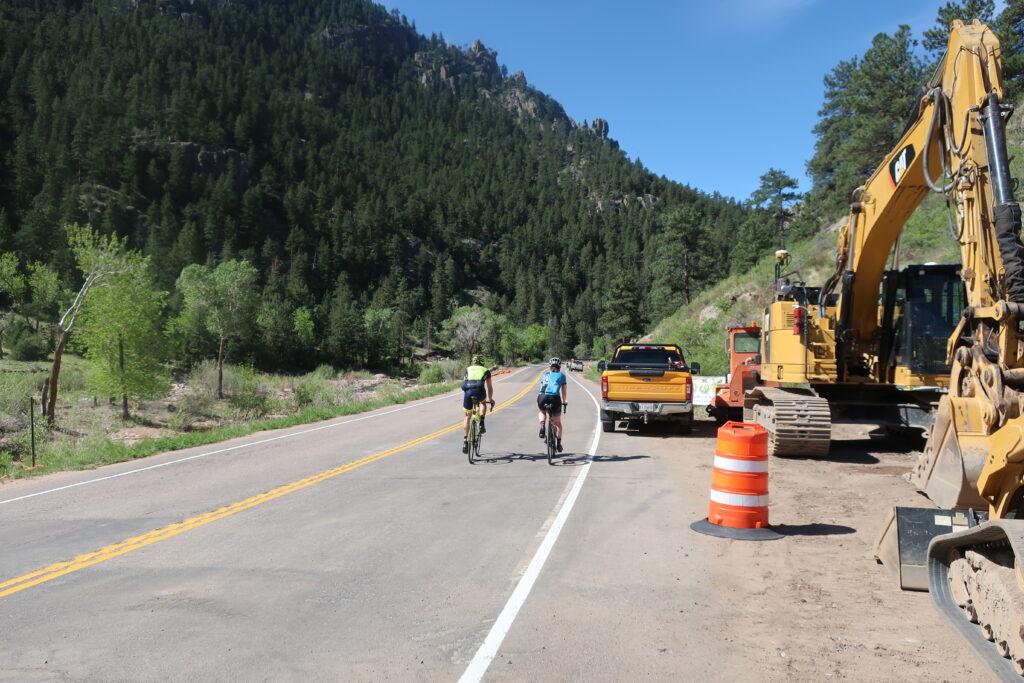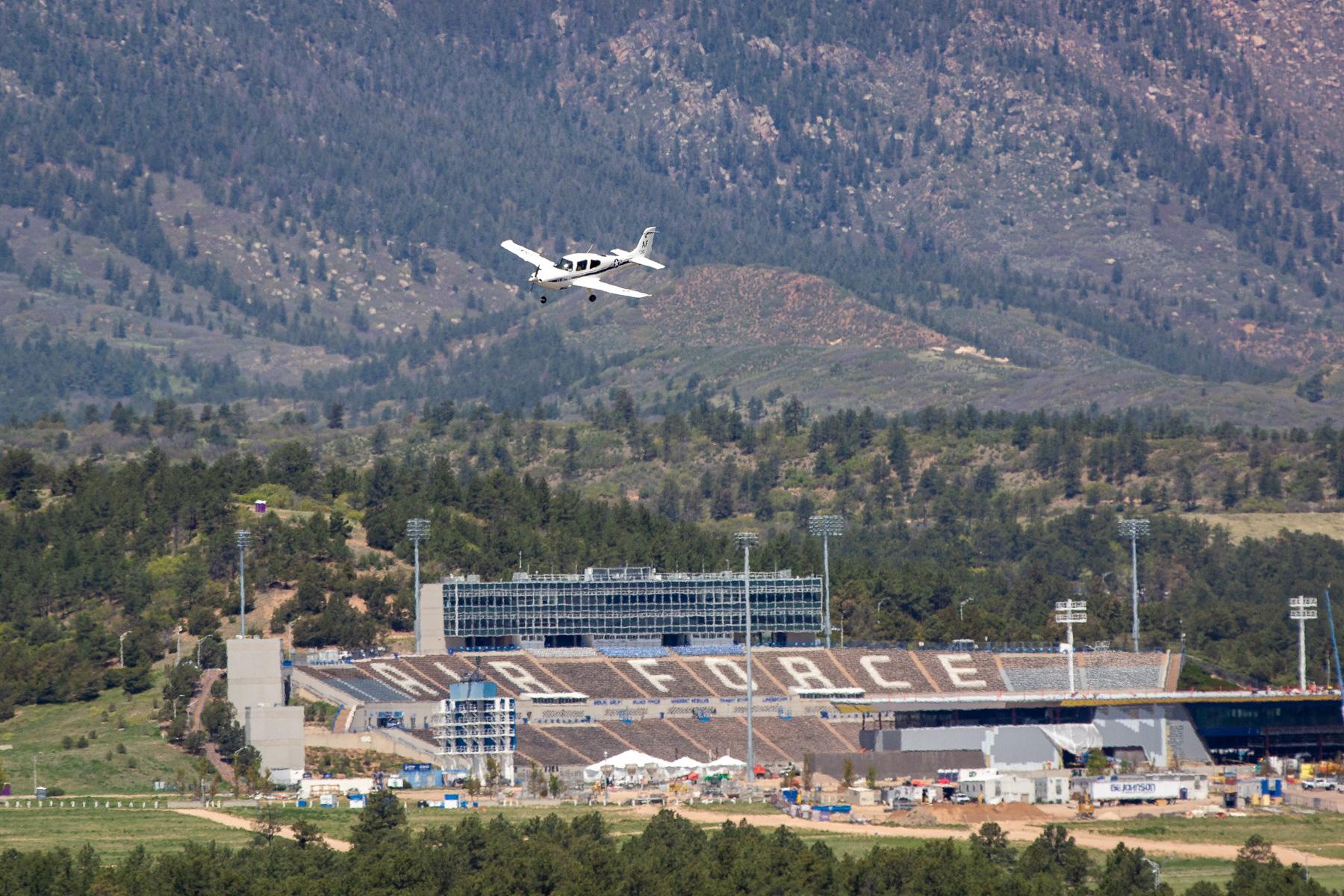
Richard Barnhardt still considers himself lucky to have survived the 2013 floods.
That September, thousands of Coloradans were forced to evacuate their homes after torrential rains pounded the state for almost a week. The resulting flooding and mudslides killed 10 people. Near his home along the St. Vrain Creek, Barnhardt remembers watching cars and pieces of neighbors’ houses float by like children’s toys.
“Missed vaporizing our butts by 3 feet,” he recalls.
Now, nearly nine years later, the canyon around him has been completely restored. Patches of Colorado Highway 7 that were washed away have been filled in. Scientists have built a new wetland system designed to withstand future floods.
And residents, like Barnhardt, are breathing a sigh of relief that construction cones are finally going away.
“We don't have to have escorts just to get to and from home anymore,” he said with a laugh. “And we can actually leave our driveway.”
On Thursday, residents and officials with the Colorado Department of Transportation gathered to celebrate the reopening of Highway 7 between Lyons and Estes Park ahead of the Memorial Day weekend.
The road should officially be open to drivers by 12 p.m. on Friday, officials said.
The highway’s repairs mark the last in a list of more than 200 separate projects the state has worked on since the floods, said Heather Paddock, CDOT’s regional director, while speaking to the crowd of attendees.
“To rebuild what was damaged in nine years is honestly significant and maybe historic as far as how quickly states have recovered from disasters like this,” she said.

A long road to recovery
Damage from the 2013 floods spread far beyond St. Vrain Canyon.
More than 30 cities and counties—from Lyons to as far east as Sterling—reported significant flooding during the event. CDOT estimates it has spent upward of $750 million on road repairs since then. Local governments have spent millions more.
Immediately after the flooding, crews focused on installing temporary fixes to damaged roadways like Highway 7. The patches helped get roads reopened, but left them vulnerable to the elements.
The St. Vrain Canyon was last on CDOT’s list for permanent repairs because it’s one of the least-trafficked state-managed corridors on the Front Range. It links Lyons with Estes Park and several smaller mountain communities, like Allenspark and Ward. Roughly 3,000 cars travel through the corridor each day.
“The community here is really going to benefit the most from this reopening,” Paddock said. “This is also a huge recreational corridor. It’s heavily cycled and lots of fly fishermen come in here to use the river.”
Permanent repairs to Highway 7 started in September, when CDOT shut it down to the public. In the eight months since, crews have focused work on a 6-mile stretch that saw the worst flood damage.
Workers repaved asphalt that was placed over the road during emergency repairs, added new guardrails along road shoulders and dug new rockfall ditches, among other improvements. The only remaining signs of flood damage are water marks along the canyon’s walls.
Drivers can also expect to see piles of uprooted tree trunks near roadway in some areas. Construction workers may need to implement a few single-lane closures this summer to put final touches on the roadway, but it will remain open permanently moving forward, said James Zufall, CDOT’s lead civil engineer manager for the project.
“It’s a beautiful canyon and I’m excited for folks to get back in here,” Zufall said. “It’s kind of a hidden gem in Boulder County.”

‘As much a river job as a road job’
The roadway wasn’t the only focus during the canyon’s eight-month closure.
Teams of scientists worked alongside construction crews to rehabilitate more than 2 miles of the St. Vrain Creek. The riverbed was severely altered during the floods, wiping out fish populations and creating safety concerns for residents.
The restoration team carted boulders and dirt that were washed downstream by floodwaters and rebuilt heavily damaged sections piece by piece. The finished product is designed to look like a natural riverbed while directing future floodwaters away from the new roadway, said Corey Engen, president of Flywater, a river construction company that led the work.
“Without doing anything to the river, we would be putting excessive force on the road and risking more damage,” Engen said.
The river repair work cost about $2 million. To shape the project, engineers relied on rocks and dirt that were already in the canyon after the floods, said Rae Brownsberger, a restoration engineer with Stillwater Sciences that consulted on the project.
“Nothing was imported,” she said. “I think that adds to the overall value of the ecological improvements.”
In recent months, the team has logged the return of brown trout populations to the creek. Bighorn sheep and other native animals have also made their way back.
More than 100 trees are also scheduled to be planted along the riverbed this summer, which will help establish the area’s topsoil.

Cyclists can return to Highway 7 later this fall
While vehicle traffic is getting the green light to return to Highway 7 this month, cyclists are going to have to wait until this fall to hit the road due to ongoing construction activity.
On Thursday, project managers invited a group of local cyclists to test out the new roadway.
Boulder resident Sue Prant pushed her gravel bike alongside a few friends who took the day off work to try it out.
This stretch of highway is an important part of a regional cycling route used by road bikers. Prant and other members in the cycling community advocated for wider shoulders to be a part of the rebuild project, she said.
“I’m not sure how steep it is because it’s been so long,” she said. “It’s 6 miles and totally uphill.”
Prant smiled as she started pedaling her way up the canyon.
“There better not be any potholes!” she yelled.
Many residents in attendance said they were overall satisfied with the road’s final appearance, even though it took nine years to get permanent repairs in place. CDOT says fewer than 20 residents live in the 6-mile area affected by the recent eight-month closure in the St. Vrain Canyon.
Barnhardt said he plans to stay in his home, which he bought 40 years ago, the rest of his life if Mother Nature allows.
“I’m just ready for things to be quiet,” he said. “That’s why I moved here in the first place.”









